
News
Our soda pan restoration project initiated on 1st January 2009 was successfully closed. The Final Report was forwarded to the European Commission on 21st May 2014, which rounded off this long and complex project. Of course, the habitat conservation activities have not been terminated, since for the sake of long-term conservation, the ecologically sustainable high level of grazing is to be applied and works aiming at the retention and regulation of natural rainwater are to be carried on in future.
A short summary of the project activities:
Water regime
Eight sluices, several new bridges were built, four kilometres of new channel and ditches were dredged, a new dyke of five km was constructed and 17 kilometres of unused channels, ditches and dykes were eliminated between 2009 and 2013. The project implemented with the translocation of many tens of thousands cubic metre soil aims first of all at the protection of the settlement, and, in the second place it serves as natural water supply for the pastures and the protection of the natural assets.
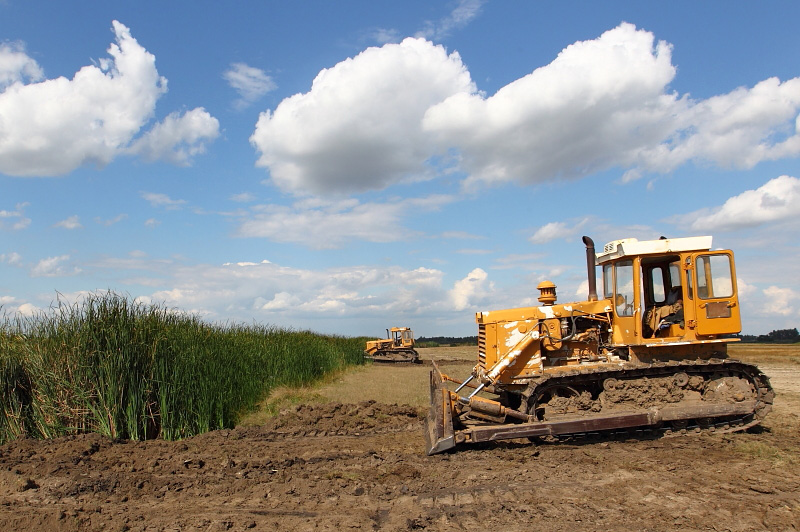
Bulldozers working on the transformation of Magdolna-ér (János Oláh)
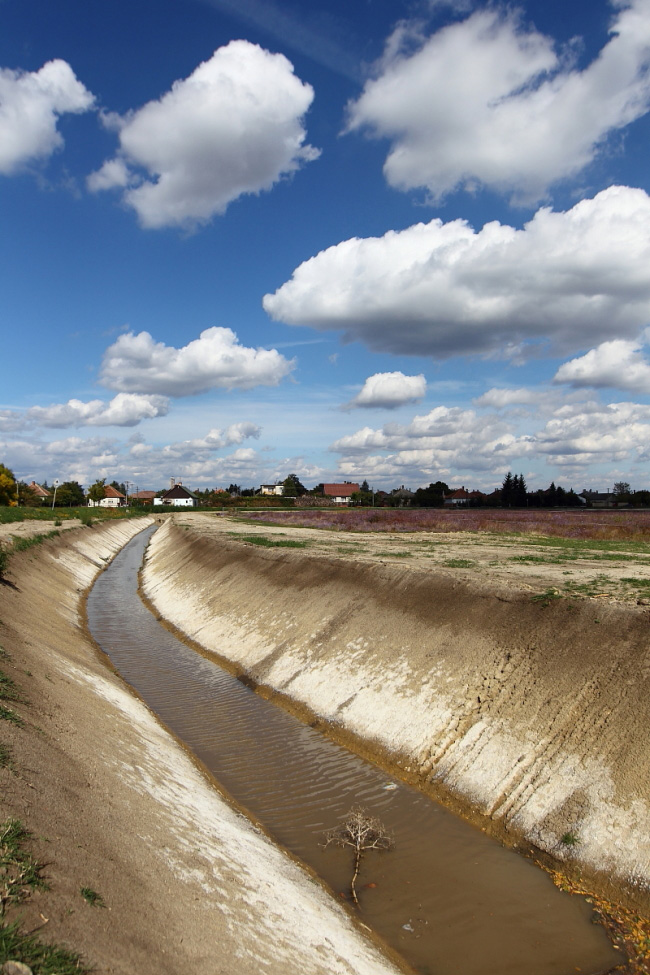
The bypass channel in Balmazújváros, which separates “waste” and “clean” water and protects the town from floods (János Oláh)
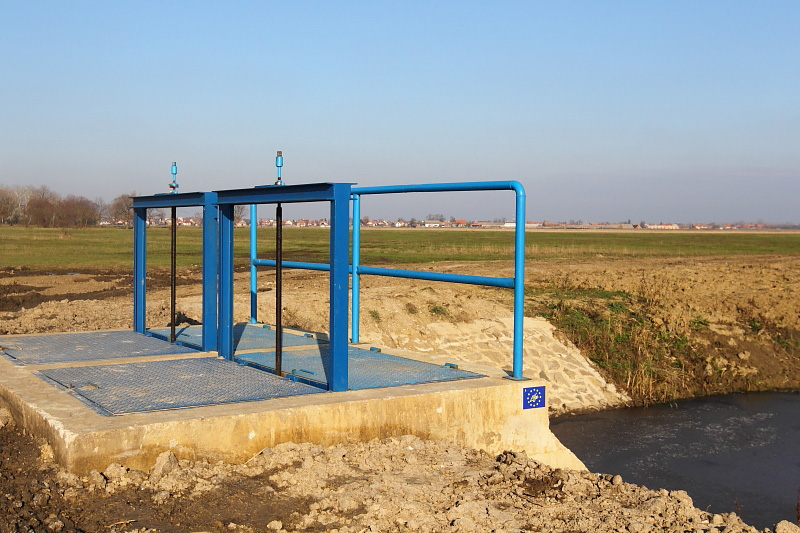
Sluice on the transformed Magdolna-ér (János Oláh)
Grazing
With the help of local farmers, who are incentivised to keep livestock, we had the Nagy-szik, Kerek-fenék and Magdolna-puszta grazed to the extent as it was before the World Wars.
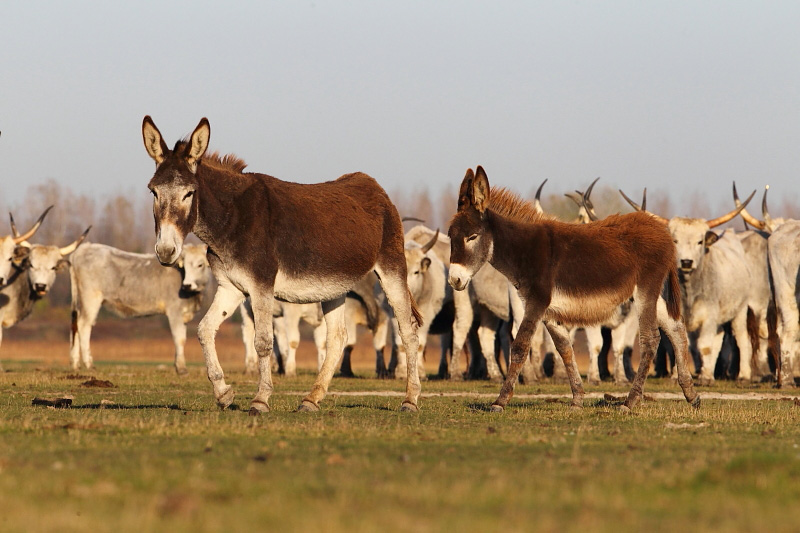
Mixed breeds of grazing stock play an important role in sustaining the habitat. (János Oláh)
Demonstration
Observation sites built and equipped with information boards were set up at Szikitó, at Kerek-fenék as well as at 139 Debreceni Road, where a guest room offers tourists visiting Hortobágy comfortable accommodation. They also have the opportunity to enjoy professional guiding services here, provided by the employees of the Hortobágy Environmental Association.
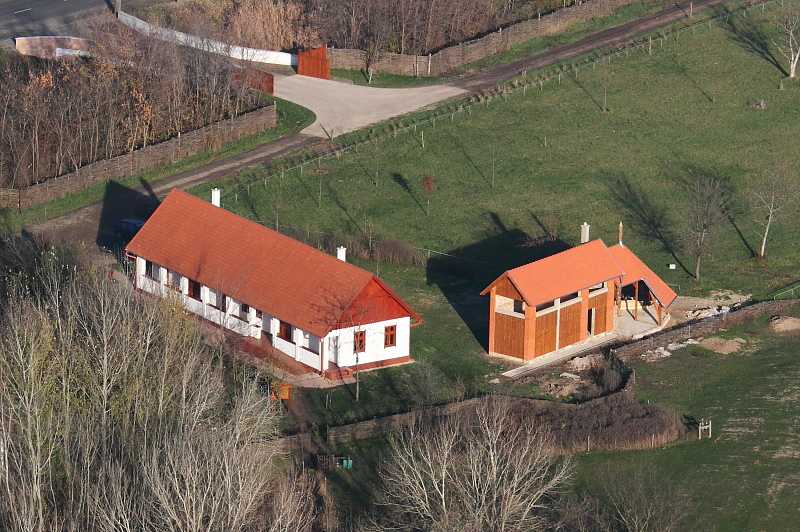
The visitors’ centre and observation site from a bird’s eye view. (János Oláh)
Improved landscape
We have restored the original, ancient landscape by eliminating dykes, dams and bridges that intersected the soda pan landscape, by removing concrete blocks and communal waste, cutting down invasive bushes and trees, restoring the original shoreline through grazing of reeds and rush. It has become as it used to be like: a grazed steppe with wild waters, a natural beauty of the Great Hungarian Plain.

Salt efflorescence in the pan bed (Zoltán Ecsedi).
Who benefited from the project?
Birds
The number of typical nesting bird species favouring soda pans habitats (Black-winged Stilt and Avocet), as well as that of ground-nesting shorebirds that require short-grass habitat significantly increased as a result of the project actions.

Redshanks at the project site (Attila Szilágyi)
Plants
Areas covered with typical soda pan plants increased as a result of the project activities, flora that like and withstand sodic soil conditions and trampling of livestock.
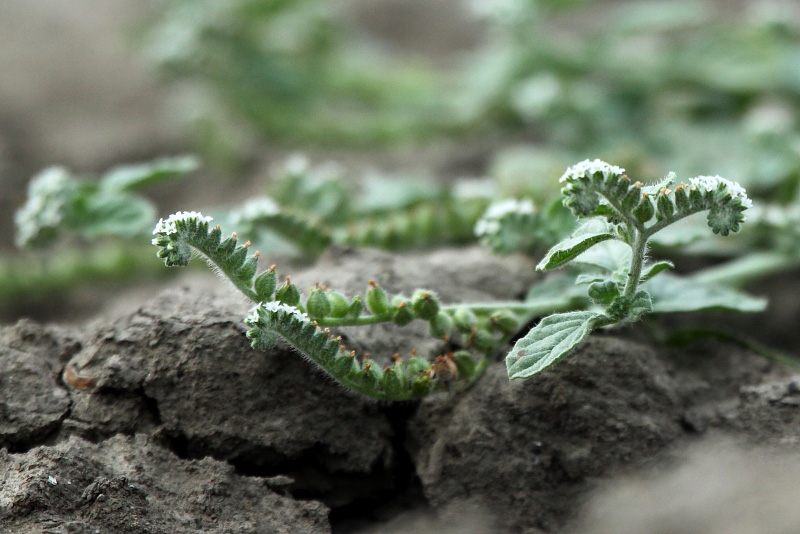
“Henye kunkor” - Heliotropium supinum, name giver of our visitors’ centre (János Oláh).
People
We commissioned with almost 300 million HUF the local and regional farmers and entrepreneurs to carry out services connected to the project, and we purchased products and domestic animals from them. Furthermore, we bought some real estate that was difficult to market locally, and on these plots of land we established farming and demonstration sites with nature conservational aims. We paid over 50 million HUF to the government in the form of VAT and duties.
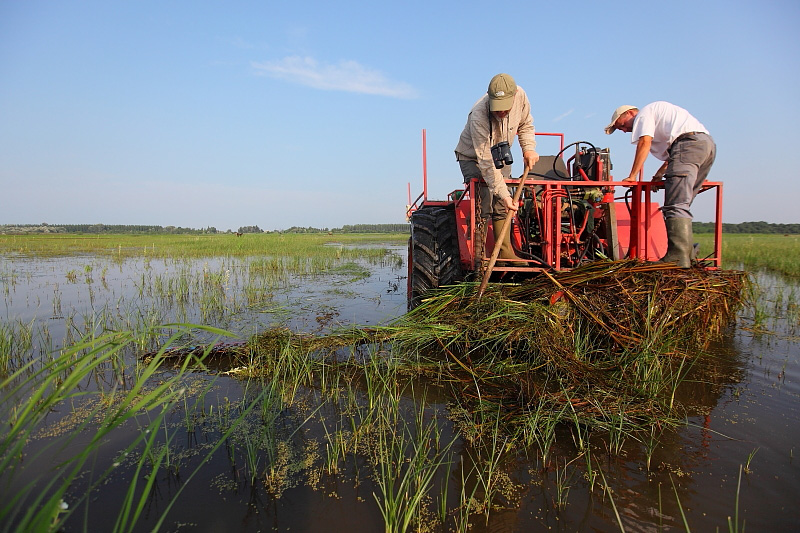
Setting back vegetation with machines in Nagy-szik (János Oláh)
The project results are being uploaded to our website under Results / Achieved results. And have been also published in the handbook titled Ecolody and Management of Soda Pans in the Carpathian Basin, available for purchase soon.
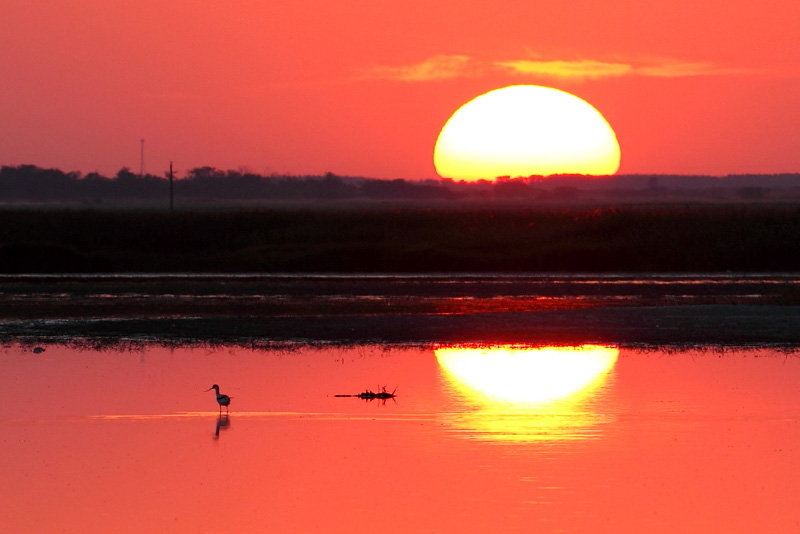
Avocet at sunset (János Oláh)
The field works has started again on the 1st of July 2013 at the project site and will continued untill all the remaining works are completed. Several machines working on the rainwater drainage channel on the edge of Balmazújváros city (Balmazújvárosi övcsatorna) and two machines started the elimination of drainage channels in the Magdolna-puszta.
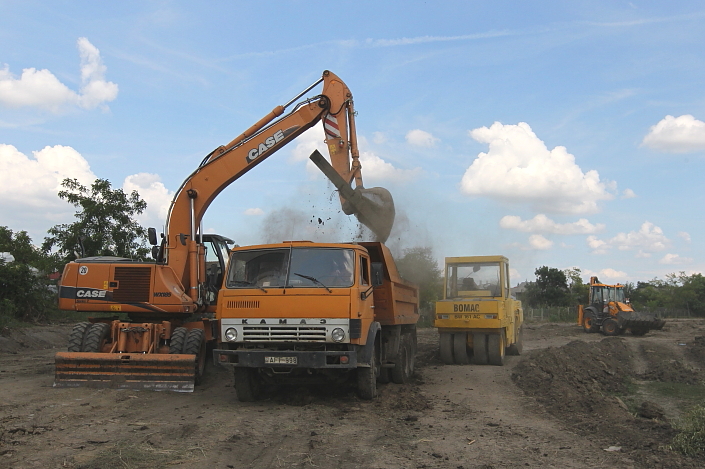
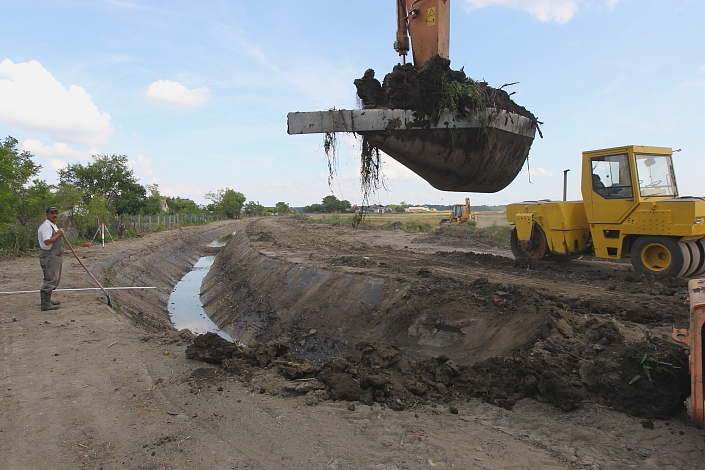
The rainwater drainage channel of Balmazújváros is being built in October 2012 (Photo: János Oláh).
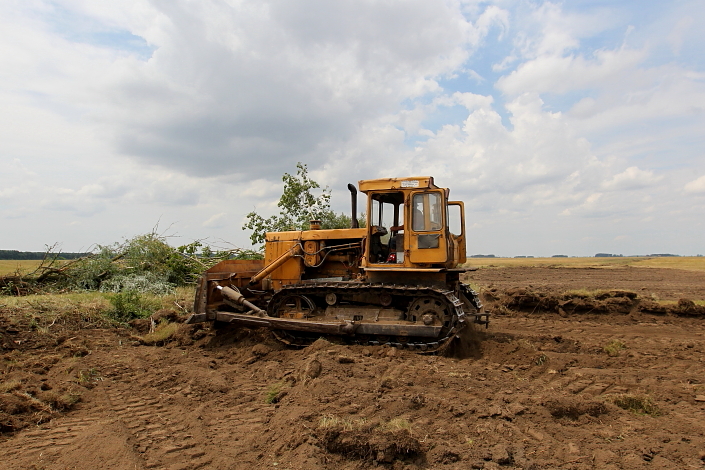
Channel elimination in the Magdolna-puszta (Photo: János Oláh).
Sad news from the last days of the year! An adult Eastern Imperial Eagle was found dead on the Magdolna-puszta on the 21st of December 2012. This individual has been regularly seen at the project site since August. There were no sign of being poisoned or shot so it could be natural death, we soon called the national park ranger and after thorough examination of the area he took the bird for further investigation. The results will only be available in January 2013.
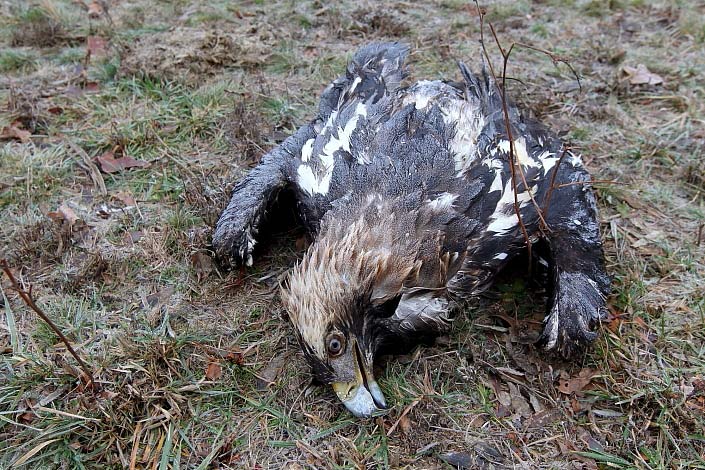
Dead adult Eastern Imperial Eagle (Aquila heliaca) at the project site (Photo: János Oláh)
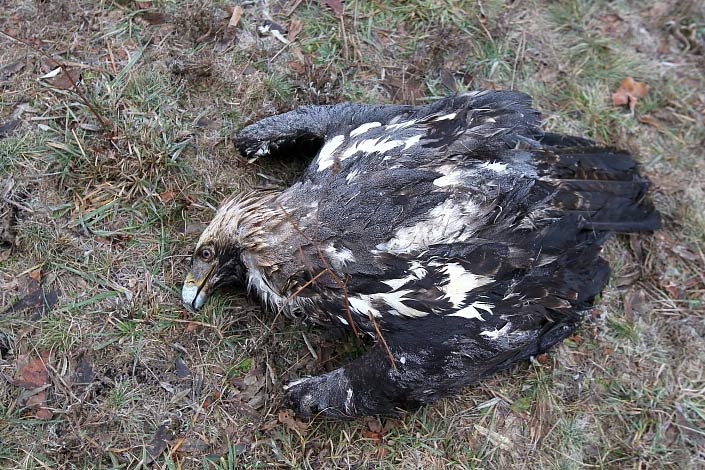
Dead adult Eastern Imperial Eagle (Aquila heliaca) at the project site (Photo: János Oláh)
The recultivation of the old (unused) rubbish dump at the Magdolna-puszta has started! This is a great news as it was a very unwelcome sight within the World Heritage Hortobágy National Park (LIFE+ project site as well). Several of HEA's recommendations - which was elaborated in the frame of the LIFE+ project - were integrated into the recultivation project. The rubbish is being sorted by machines and finally all will be transported so the grassland could be restored in a few years time.
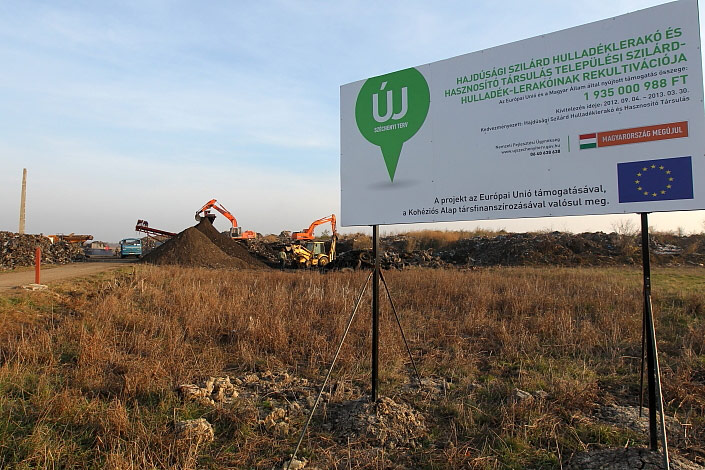
The recultivation of the landfill of Magdola-puszta has started (Photo: János Oláh)
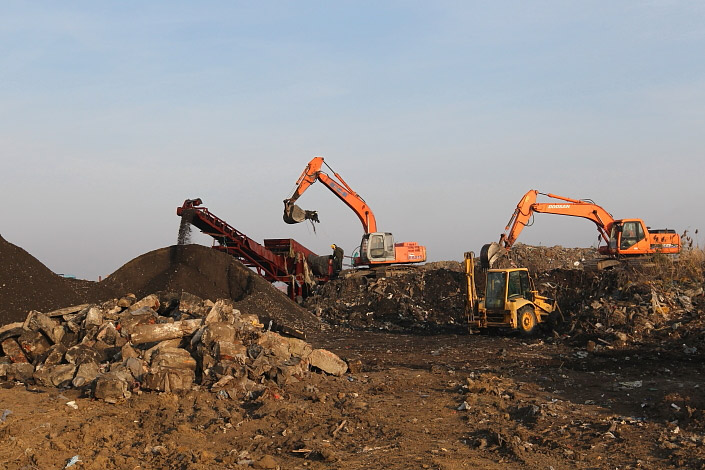
The rubbish is being sorted and finally it will be transported (Photo: János Oláh)
In November also four flood gates / sluices were built in the Magdolna-puszta by the LIFE+ project but the drainage channles will only be eliminated in 2013. These channels were built to dry the grassland and one of the main goal of the LIFE+ project is to restore the old wetland. The new flood gates / sluices will be operated by HEA and the main purpose will be the water retention (winter precipitation) and occasional flooding if circumstances are adequate.
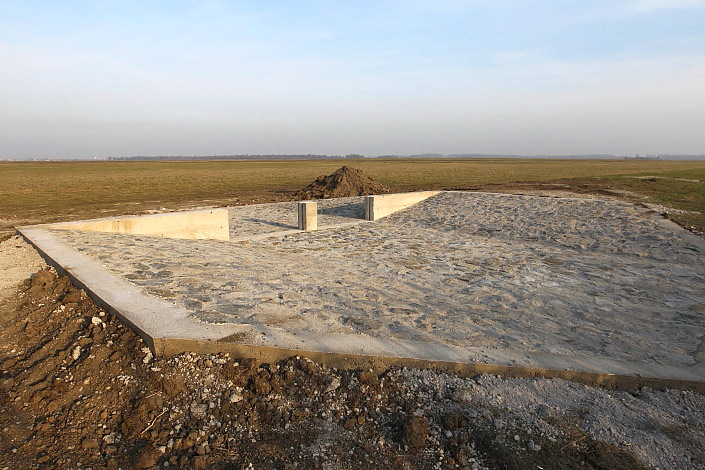
One of the flood gates on the Magdolna-puszta (Photo: János Oláh)
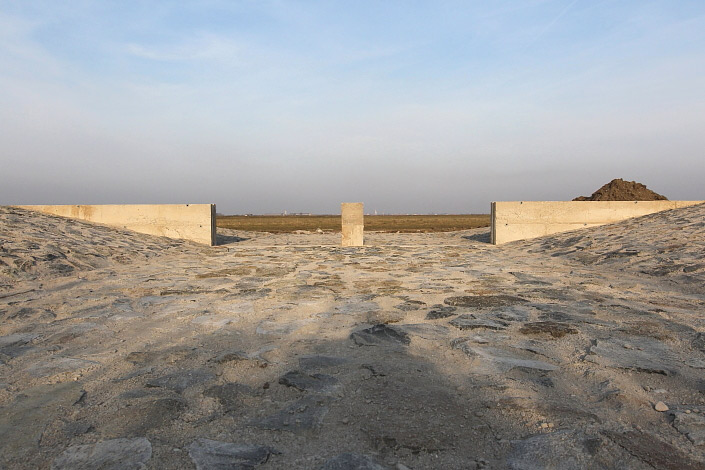
One of the flood gates on the Magdolna-puszta (Photo: János Oláh)
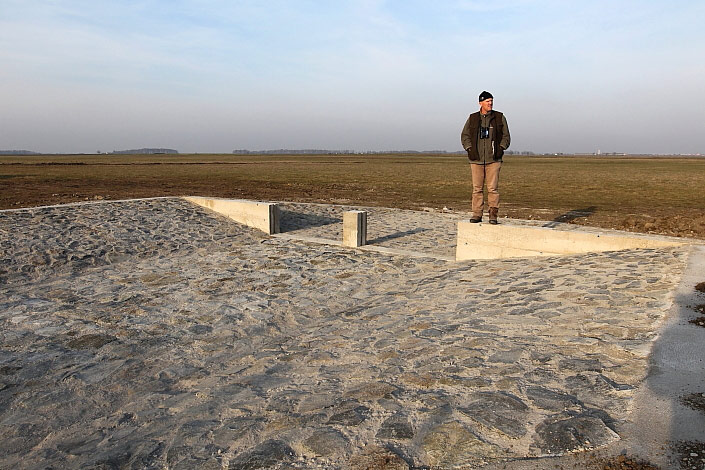
One of the flood gates on the Magdolna-puszta (Photo: János Oláh)
The field works are contiuous on the Nagy-szik since 20th of July. The extremely dry conditions are perfectly adequate for the good progress in the rehabilitation works. In September the biggest emphasis were on the rehabilitation of the Magdolna-ér and it has been completed. The main goal was achived: Magdolna-ér was transferred into a natural watercourse where water can overflow and the old deep channel was eliminated. The main sluice at the end of the Magdonla-ér in the Nagy-szik was also completed by October. At the moment the main emphasis is on the creation of the rainwater drainage channel on the edge of Balmazújváros (Balmazújvárosi övcsatorna). If the field-works will continue in such rate (if weather permitting) in October the Nagy-szik part can be finished in 2012.
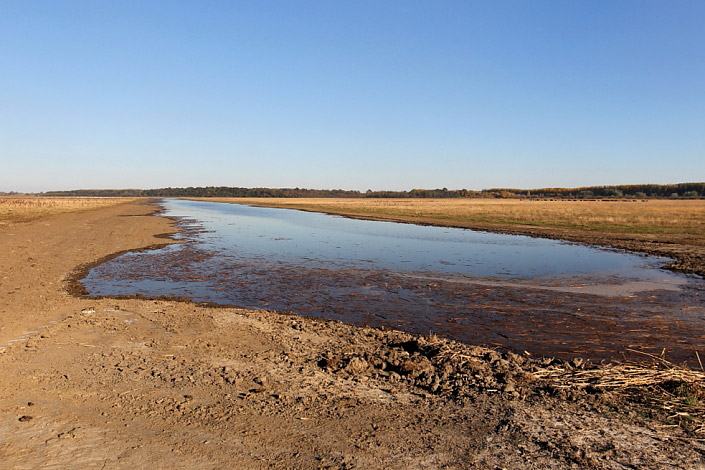
The Magdolna-ér as an overflowing water-course after the rehabilitation works in October 2012 (Photo: János Oláh)
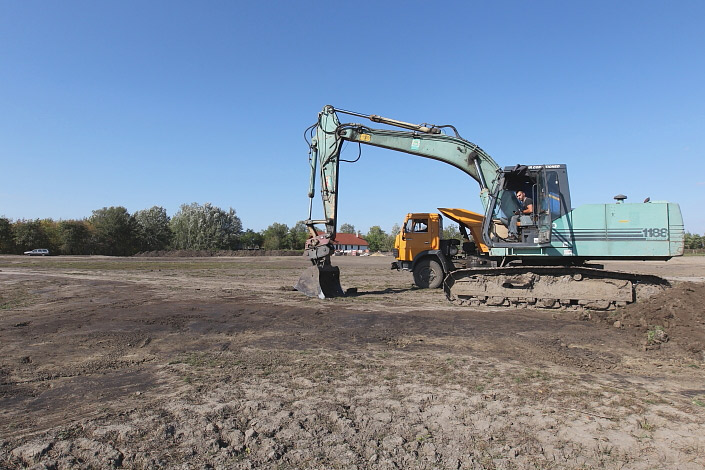
Machines working on the artifical shoreline of the soda pan (Photo: János Oláh)
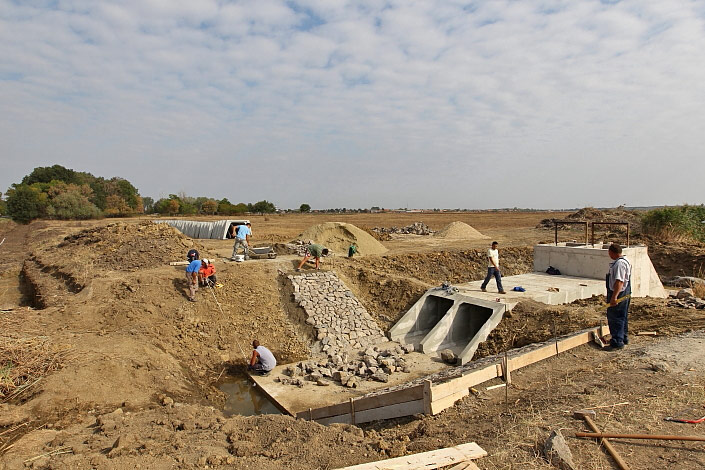
The main sluice on the Magdolna-ér is being built in September 2012 (Photo: János Oláh)
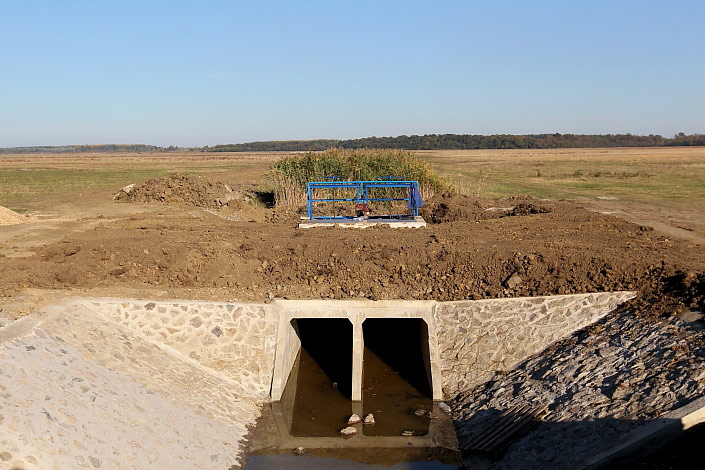
The main sluice on the Nagy-szik part of the Magdolna-ér has been completed by October 2012 (Photo: János Oláh)
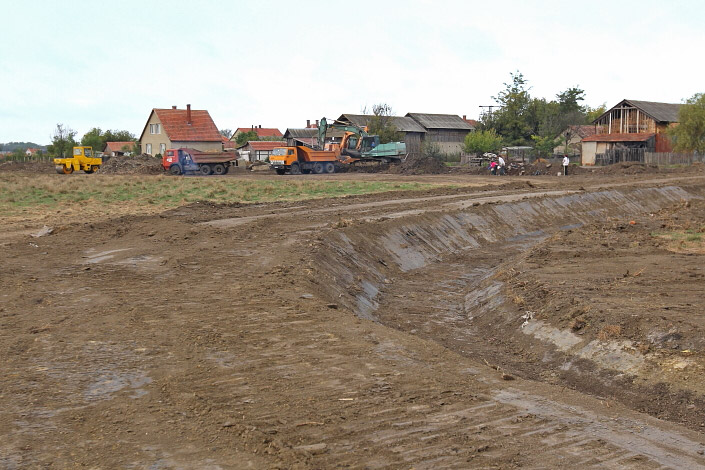
The rainwater drainage channel of Balmazújváros is being built in October 2012 (Photo: János Oláh)
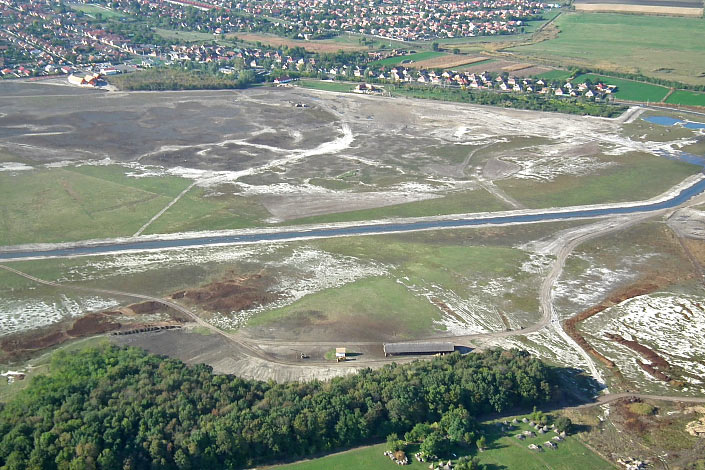
Bird-eye view of the Nagy-szik in October 2012. The rehablilitation of the Magdolna-ér has finsihed (Photo: Gábor Tihanyi)
